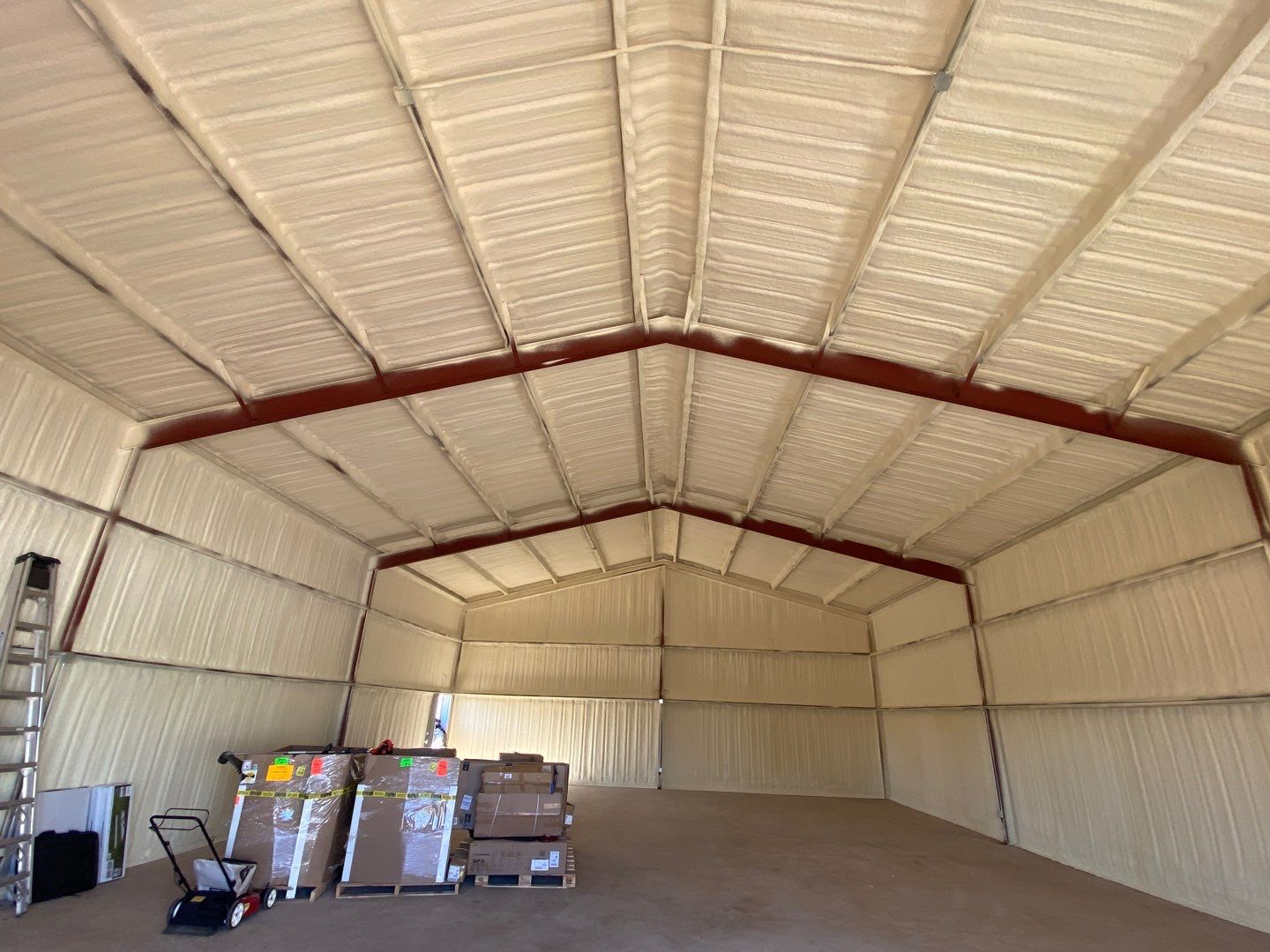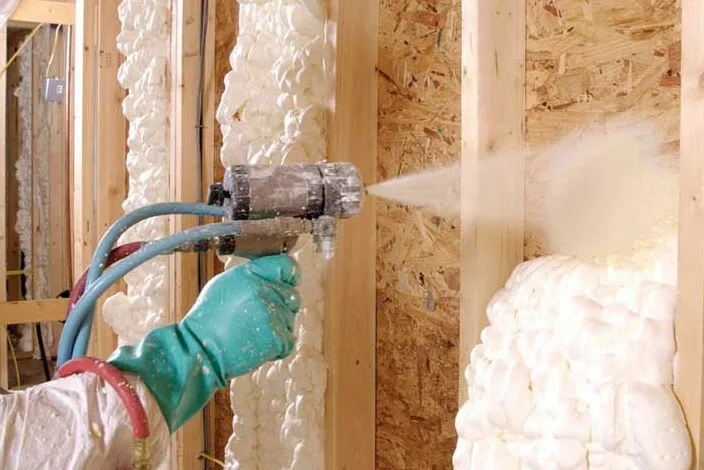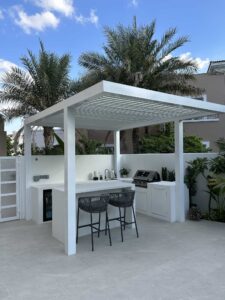Discover How Spray Foam Roof Insulation Enhances Indoor Climate Control
Spray foam roof insulation plays a critical role in regulating indoor temperatures by forming a seamless thermal barrier that minimizes heat transfer and air leakage. With R-values ranging from 6.0 to 7.0 per inch, this system adheres directly to roof decking and eliminates gaps, cracks, and thermal bridges. The result is a stable indoor environment, regardless of weather fluctuations, with noticeable improvements in comfort and temperature consistency.

How Traditional Roofing Systems Disrupt Indoor Climate
Major Pathways of Energy Loss
In most buildings, 25–35% of thermal energy loss occurs through the roof due to conduction, convection, and air infiltration. Conventional systems with multiple penetrations and jointed assemblies allow conditioned air to escape, undermining HVAC efforts and contributing to uneven indoor temperatures.
Air leaks around HVAC units, plumbing and electrical penetrations, and structural seams often go unnoticed but have a substantial impact on interior climate control. These small gaps can cumulatively drive up energy use and create uncomfortable drafts or hot spots within a space.
Thermal Bridging and Indoor Temperature Imbalance
Metal roof structures and mechanical mounts create uninterrupted paths for heat transfer, known as thermal bridges. Spray foam insulation wraps these elements in a continuous layer, effectively halting direct heat exchange and helping stabilize interior temperatures.
Application Techniques That Influence Interior Comfort
Preparing the Roof for Maximum Effectiveness
Before spray foam is applied, professional crews check moisture levels, clean surfaces, and monitor temperatures to ensure strong adhesion. For aged metal or concrete roofs, primers may be used to secure long-term performance and insulation stability.
Layered Application for Optimal Insulation
Spray foam is typically installed in multiple thin layers. This technique controls heat buildup and allows the foam to cure evenly, forming dense, closed-cell structures that trap air and resist temperature changes.
Requesting post-installation core samples can confirm whether the proper foam density and structure were achieved, ensuring effective climate control.

Regional Performance and Interior Climate Benefits
Climate Zone Adaptability
The impact of spray foam insulation on indoor climate varies by region. In colder zones, it significantly reduces heat loss, while in hot climates, it limits solar heat gain through the roof.
Regional Indoor Comfort Benefits
| Climate Zone | Heating Control Improvement | Cooling Control Improvement |
| Cold (Zone 6–7) | High | Moderate |
| Mixed (Zone 4–5) | Moderate | Moderate to High |
| Hot (Zone 1–3) | Low | High |
Reduced Strain on HVAC Systems
With better insulation, HVAC systems run less often and at lower intensity. This not only improves temperature consistency but also extends the lifespan of the equipment and lowers the risk of breakdowns. Spray foam insulation often leads to a 25–45% reduction in heating and cooling loads.
Verified Performance for Climate Control Reliability
Material Standards
Spray foam insulation must meet specific performance metrics to guarantee long-term comfort:
| Performance Metric | Closed Cell Foam | Open Cell Foam | Industry Standard |
| R-Value per inch | 6.0–7.0 | 3.5–4.0 | ASTM C518 |
| Compressive Strength | 25–40 psi | 1–2 psi | ASTM D1621 |
| Water Absorption | <2% | 5–15% | ASTM D2842 |
| Air Permeability | <0.02 L/s·m² | 1.0–5.0 L/s·m² | ASTM E283 |
| Fire Rating | Class A Available | Class A Available | ASTM E84 |
Assurance Through Testing
Professional contractors conduct inspections using core sampling, infrared imaging, and blower door tests to validate that the insulation is continuous and meets the necessary performance criteria.
Integrated Building Approaches for Superior Indoor Climate
Enhancing the Entire Building Envelope
The benefits of spray foam are maximized when paired with other energy-efficient upgrades. Coordinating insulation across roof and wall assemblies ensures no gaps in coverage, while HVAC systems can be resized to suit the building’s improved energy profile. Window and door upgrades help maintain the desired indoor conditions with less effort.
Intelligent Climate Monitoring
Spray foam insulation works seamlessly with smart building systems. Sensors track indoor temperature and humidity levels, allowing building managers to verify comfort and energy performance. Automated HVAC adjustments respond dynamically to maintain ideal conditions inside.
Bonus Tip: Installing energy monitors before and after spray foam application can help quantify improvements and justify future upgrades.
What to Consider Before Installation
Structural Suitability
Before installing spray foam, it’s essential to evaluate your roof’s structural load capacity and confirm that it can support the additional insulation without compromising safety. Wind resistance, thermal expansion, and seismic performance should all be reviewed.
Existing Roof Health
The condition of your current roof matters. If membranes are deteriorated or if moisture is present in existing insulation, repairs or removal may be necessary. Proper drainage must also be ensured to prevent standing water from affecting the insulation.
Code Compliance
Local building codes may specify flame resistance, vapor barrier inclusion, and ventilation standards, especially if the insulation changes how the building envelope performs.
Frequently Asked Questions
How soon will indoor comfort improve?
Temperature regulation begins immediately after installation. Most buildings experience full stabilization within 30–60 days as the building adjusts to reduced thermal fluctuations.
Is spray foam compatible with old insulation?
It depends on the condition and moisture level. Dry, stable insulation may remain, but any damaged material should be removed.
Does it require much maintenance?
Minimal maintenance is needed. Annual inspections and a re-coating every 10–15 years will keep the insulation protected and effective.
Does it affect insurance or warranties?
Professional installation often enhances building warranties and can even reduce insurance premiums, especially with improved fire ratings.
Making the Right Choice
Spray foam roof insulation is a powerful tool for enhancing indoor climate control. Whether you’re managing a commercial facility or improving a home, it delivers a more consistent, comfortable interior environment year-round. Evaluate your building’s structure, current insulation, and HVAC performance before proceeding. Consult certified professionals to ensure installation is done to the highest standards for long-lasting results.
Reviewed by:
Henry Turner, with 9 years of experience in spray foam insulation, contributed to the review of this article to ensure technical accuracy and clarity.












